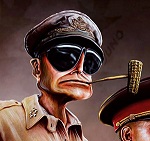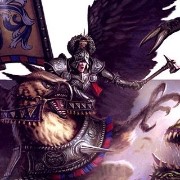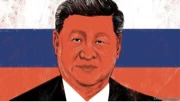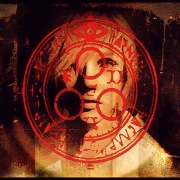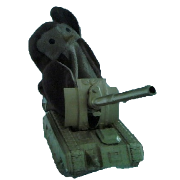|
https://www.youtube.com/watch?v=LhTLR1i3v_M
|
|
|
|

|
| # ? May 23, 2024 06:50 |
|
In honor of the month, I just wanna go ahead and quote a whole big part of "A People's History of the Second World War: Resistance Versus Empire"quote:Cracks in the edifice of racism appeared when the US armed services expanded from a few hundred thousand to over 14 million. The state now had no choice but to appeal to the country’s nine million blacks. In 1940 the Selective Service and Training Act opened the forces to ‘any person, regardless of race or color’ and promised ‘there shall be no discrimination ...’.68 Yet the Services remained thoroughly segregated. As Roosevelt put it: ‘The policy of the War Department is not to intermingle colored and white enlisted personnel in the same regimental organization.’69 Presumably ‘no discrimination’ only applied within separate black and white sections, not between them.
|
|
|
|
"Ewww you saved my life with a black person's blood??? Take it back out of me!!" - an American
|
|
|
|
quote:Admiral Nimitz warned desegregation was ‘the Soviet way, not the American way’.72 
|
|
|
|
Yeah it's just out there, totally masks off. "Freedom for every human being regardless of the color of their skin? THAT'S PINKO COMMIE poo poo!" 
|
|
|
|
Re: that quote from Nimitz, the "Hero of Midway": Black people don't automatically like other black people just because they're black. They're human beings. Imagine being a "mess boy" on a navy ship in WW2 where you live in a tiny floating metal box that you can't get off of for weeks or months and you aren't allowed to hang out with anyone other than the other 3-10 black people and you don't particularly like any of them and there's combat situations going on and you can't serve a gun or do anything other than make ham sandwiches and coffee.
|
|
|
|
Hmm I wonder if any of this has anything to do with fragging which started happening a lot more in later wars.
|
|
|
|
Teriyaki Hairpiece posted:Re: that quote from Nimitz, the "Hero of Midway": talk about the HAM SANDWICH RACE
|
|
|
|
I remember hearing and reading some info about that when Soviet Union was nearing its end some intelligence people devised a plan how system could continue by ditching communism and becoming nationalist authorian state. But I just can't find any info on this at the moment. Does anybody else remember or know what I am talking about?
|
|
|
|
Raskolnikov38 posted:
lol yeah coolidge Teriyaki Hairpiece posted:"Ewww you saved my life with a black person's blood??? Take it back out of me!!" - an American you got three pints o' kramer in you, buddy
|
|
|
|
Here's a very long and very fun slice of the book "Low Life: Lures and Snares of Old New York" by Lucy Santequote:Late in the nineties, he began a major trend by founding the Chuck Connors Association, the sole purpose of which was to hold an annual ball, an affair that could guarantee a sizable profit from ticket sales and bar take, and whose profits were transmitted directly to Chuck’s pocket. As well connected as Connors was, he had no trouble coming up with a roster of honorary members that included prominent politicians, actors, artists, and writers, as well as such raffish personalities as George F. Train (the ex-millionaire former Union Pacific Railroad promoter and Crédit Mobilier manipulator who passed through phases of dissolution and bohemianism before ending up busted and living at the Mills Hotel shelter on Bleecker Street), plus the mayors of the Bowery, Avenue C, Poverty Hollow, and Chinatown. The first ball, held like its eventual successors at Tammany Hall on Fourteenth Street, featured music by two bands, Professor Wolf’s Orchestra and Professor Yee Wah Lung’s Chinese Orchestra. It drew representatives from clubs uptown—the Princeton, the New York Athletic, the Knickerbocker, the Hasty Pudding (imported from Cambridge), the Racquet and Tennis—and downtown—the Knickerbocker Icemen, the Lady Truckers, the Desperate Seven, the Bartenders’ Club, the Lee Hung Fat Club, the Stuffed Club, the Sweet Sixteen Club, the French Cooks, the Girl Getters. His 1903 ball is noted for having been raided by Carry Nation, the temperance agitator, who was in town on one of her East Coast swings. She swept bottles and glasses off tables, snatched cigars and cigarettes from lips, and made her way to the podium, where she began reading a letter from a disconsolate mother whose daughter was alleged to be lost in the wilderness of the Bowery. At this point a wild local girl called Pickles threw a bottle and some epithets at the crusader, who retaliated by unsheathing her ever-present hatchet and chasing Pickles around the room with it. The ball exploded into a pandemonium of police whistles, shouts, screams, and fistfights among the guests, which stopped when Connors collared the reformer and personally ejected her from the building. It's a good history book, one of my favorites, but it's goddamn exhausting.
|
|
|
|
https://twitter.com/guardian/status/1490946273788272640Teriyaki Hairpiece posted:Here's a very long and very fun slice of the book "Low Life: Lures and Snares of Old New York" by Lucy Sante tag urself I'm Eddie the Plague seriously though this is fantastic, thank you for sharing
|
|
|
|
https://mobile.twitter.com/Sulliview/status/1491064632131346432
|
|
|
|
so i need some help with this Up Front December 15, 1944  quote:drat that's a fine StuG. i was under the impression that the nazis did not back finland in the winter war and that the winter war was proof of the soviets insatiable thirst for world domination but uhhh nazi tanks were apparently so commonly used by finland in that war that a random finnish goon easily recognized one based off of a random world war ii comic? am i missing something here?
|
|
|
|
he was probably talking about the continuation war where axis troops went to the finnish front. this of course spawned a finnish-german war when the finns gave up in 1944 and the soviets forced them to evict all axis soldiers from their territory immediately
|
|
|
|
Raskolnikov38 posted:the continuation war oh huh apparently there was a second winter war where the finns explicitly teamed up with the nazis weird how ive never seen this mentioned before despite the fact that everyone loves to talk up the finns as these awesome badasses who really stuck it to the commies
|
|
|
|
Yeah, there is plenty of love for the Winter War…everything after that until now it politely completely forgotten about.
|
|
|
|
Teriyaki Hairpiece posted:Re: that quote from Nimitz, the "Hero of Midway": In the 70s there were mutinies on several US ships by the black sailors since they were consistently and obviously getting the worst jobs on the ships and having their shore leave denied.
|
|
|
|
The Stug is a pretty recognizable vehicle if you're into WW2 stuff but that doesn't detract from the Finns being Nazi collaborators
|
|
|
|
Ardennes posted:Yeah, there is plenty of love for the Winter War…everything after that until now it politely completely forgotten about. Probably because the soviet command then wasn't led by clowns.
|
|
|
|
so im curious about something at about what time does hitlers kill count exceeds churchills kill count in terms of the competition for historys greatest monster
|
|
|
|
When they used the family guy skintone scale.
|
|
|
|
Some Guy TT posted:so im curious about something at about what time does hitlers kill count exceeds churchills kill count in terms of the competition for historys greatest monster Probably sometime in May or June of 1944 June, most likely.
|
|
|
|
Some Guy TT posted:so im curious about something at about what time does hitlers kill count exceeds churchills kill count in terms of the competition for historys greatest monster It's estimated that 10 million people died of deprivation in India per year of British rule. 45 million people died in the European theatre of World War II, so if we attribute all those deaths to Hitler and all the deaths in India to whoever is the current prime minister, Churchill passes Hitler's death toll around late 1940, and Hitler never catches up again. This is obviously an oversimplification. The moral culpability of Churchill maintaining a murderous system is different from Hitler creating a new murderous system, but they're both pure evil. Maybe the greatest monster for what they did to India is King George III, or Robert Clive, who established East India Company rule in the country.
|
|
|
|
https://mobile.twitter.com/_Dinger_s/status/1492358799134502914
|
|
|
|
lol remember v-chips
|
|
|
|
I can't believe I'm quoting the same book twice in such quick succession but here's A People's History of the Second World War on the Bengal Famine and Churchill:quote:The Secretary for India was Leo Amery, who has been described as a ‘passionate advocate of British imperialism [and] right-wing politics’.17 His reaction to the first reports of starvation was expressed in a letter to the retiring Viceroy, Lord Linlithgow. Amery welcomed this distraction from the movement for independence. The public were ‘now absorbed in questions of food and cost-of-living’ which might ‘infuse a tinge of realism into politics ...’.18 For further reading I suggest "Churchill's Secret War"
|
|
|
|
https://mobile.twitter.com/EthosLifestyle/status/1492869927413456898
|
|
|
|
Teriyaki Hairpiece posted:For further reading I suggest "Churchill's Secret War" I was looking for this and "A People's History..." (and I did find them) and I stumbled across  quote:After three years of great loss and suffering on the Eastern Front, Imperial Russia was in crisis and on the verge of revolution. In November 1917, Lenin’s Bolsheviks (later known as ‘Soviets’) seized power, signed a peace treaty with the Central Powers, and brutally murdered Tsar Nicholas (British King George’s first cousin) and his children so there could be no return to the old order. I'm excited to dig into it
|
|
|
|
The British gave the Whites about 100 million pounds' worth of materiel in 1919, mostly to Denikin's army. A few hundred thousand rifles, a few dozen tanks, etc. Churchill apparently referred to Denikin's army as "his own" in private.
|
|
|
|
This Churchill guy seems a bit of a poo poo.
|
|
|
|
Fish of hemp posted:This Churchill guy seems a bit of a poo poo. Is this really going to be your Churhill to die on?
|
|
|
|
gradenko_2000 posted:I was looking for this and "A People's History..." (and I did find them) and I stumbled across Allied intervention in the Russian Civil War is insane and so very swept under the rug. There were like 10,000 American troops in Russia at one point. The Japanese conquered the whole Russian Far East and half of Siberia and hung around for years.
|
|
|
|
People of so many countries participated the attempted extirpation of the Bolsheviks. Canadians! Canadians invaded the Soviet Union!
|
|
|
Teriyaki Hairpiece posted:Allied intervention in the Russian Civil War is insane and so very swept under the rug. There were like 10,000 American troops in Russia at one point. The Japanese conquered the whole Russian Far East and half of Siberia and hung around for years. Is there a good general history of the Russian civil war out there that goes into details about the interventionist armies and their actions?
|
|
|
|
|
so did zinoviev actually plot to murder stalin im hearing it very taken for granted that of course he didnt and its tankie talk to suggest that he did but the main source i can find for this is stephen kotkin which is uhhh well id just like another source is all
|
|
|
|
no. he was probably one of the people that trotsky was actually (somewhat) in contact with but an actual conspiracy to either assassinate leaders or overthrow stalin didn't exist
|
|
|
|
Some Guy TT posted:so did zinoviev actually plot to murder stalin im hearing it very taken for granted that of course he didnt and its tankie talk to suggest that he did but the main source i can find for this is stephen kotkin which is uhhh well id just like another source is all I have read a lot of Russian history and I have never read any serious source-based suggestions that Zinoviev or any other high-ranking Bolsheviks were plotting to murder Stalin. The connection seems to come from the fact that the guy who murdered Kirov in 1934, Leonid Nikolaev, was politically tied to Zinoviev, but since Zinoviev was the Leningrad party boss for a long time, basically everyone who was in the party in Leningrad was connected to Zinoviev in some way. After Kirov's murder the NKVD was tasked with finding any potential coconspirators among other Zinovievites, and Ezhov took that and ran with it to the point that he ended up accusing Zinoviev and Kamenev of organizing an entire circle plotting to kill Kirov and Stalin and others and replace them with Trotsky. They eventually "confessed" to the plot in their show trial, but there's very little documentary evidence to back up claims about why one way or another. Torture is one explanation, J. Arch Getty (one of the leading revisionist historians of Stalinism) offers this as a summary of other explanations: J. Arch Getty and Oleg Naumov, The Road to Terror, 249-250 posted:There are persistent rumors that Zinoviev and Kamenev agreed to confess to the scenario in return for promises that their lives would be spared, but no documentary evidence or firsthand testimony has been found to support this. Others argue that they may have confessed out of loyalty to the party, which needed their confessions as negative examples.7 This explanation of the confessions of Old Bolsheviks in the show trials of the 1930s is supported by Bukharin's last letter to Stalin from prison (see Document 198). It's obviously basically impossible to prove a negative so it's technically possible that Zinoviev was plotting something, but there's no evidence to back it up so it is exceedingly unlikely, to the point that no serious history of Stalinism considers it a possibility. Here's Getty again: ibid, 256 posted:Like other public accusations and show trials of this period, the 1936 trial scenario was based on a kernel of truth that had been embellished and exaggerated. We know that in the fall of 1932 a single bloc of oppositionists uniting Trotskyists and Zinovievists had in fact been formed at Trotsky's initiative.14 But there is no evidence that this bloc was oriented toward organizing "terrorist acts" or anything other than political conspiracy. In the hands of the Stalinists, though, this event was magnified into a terrorist conspiracy aimed at killing the Soviet leaders. Preemptive response to "why would the Soviet leadership be interested in fabricating a supposed Trotskyist plot to overthrow Stalin when one didn't exist?" is provided by the same source. ibid, 259-260 posted:The official face of the enemy had been reconstructed in the summer of 1936: he was a former left oppositionist who had taken the path of terror. He was an agent of Trotsky, a spy, an assassin. This version had advantages for several segments of the party. For Stalin and his circle, it provided a rationale for finally destroying personal and political enemies whose opposition went back more than a decade, and it created a climate in which future opposition obviously carried life-and-death risks. For the nomenklatura at all levels, it justified the obliteration of and final victory over a possible alternative leadership whose leaders had argued for years that the Stalinist faction should be removed. This definition-or attribution-of the enemy also benefited the ruling elite as a whole insofar as it presented a clearly defined evil and opposite "other": the groups behind Zinoviev, Kamenev, and Trotsky. They had for years stood for an alternative leadership, an alternative team to lead the country. If they won, however unlikely that might seem, the current team would be replaced in quick order. Although there seemed little chance that Zinoviev or Trotsky would return to power in the mid-1930s, the possibility always existed. Memories of nomenklatura members told them that stranger things had happened. Lenin's ascension to power in 1917 must have seemed at least as far-fetched in 1915. This evil force could be conveniently blamed for a variety of sins of the moment, including industrial failure, agricultural shortfalls, and other policy shortcomings more properly attributable to the nomenklatura itself.21 The left opposition made perfect scapegoats. So basically no, there's no evidence they were actually plotting anything except confessions that were most likely extracted under torture and/or other forms of coercion and psychological pressure, but there are explanations that make sense for why Stalinist party cadres might have wanted to fabricate such a plot, and despite their disagreements on how to interpret the evidence, both the Kotkins and the anti-Kotkins within Soviet history are in agreement that there's no actual evidence of a plot to kill Stalin. vyelkin has issued a correction as of 02:38 on Feb 15, 2022 |
|
|
|
Teriyaki Hairpiece posted:Allied intervention in the Russian Civil War is insane and so very swept under the rug. There were like 10,000 American troops in Russia at one point. The Japanese conquered the whole Russian Far East and half of Siberia and hung around for years. Mike Duncan claims there's no evidence for this on his podcast. In fact he adds that the allies wanted the reds to win the civil war. Looking forward to his makhno episode!
|
|
|
|

|
| # ? May 23, 2024 06:50 |
|
^^lmao. Is he gonna gloss over the virulent antisemitism of liberal's favorite anarchist?
|
|
|













